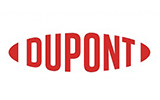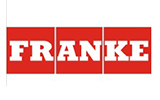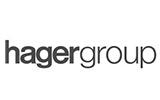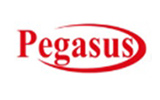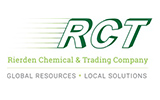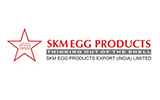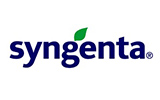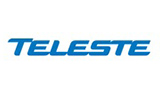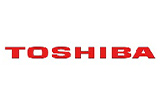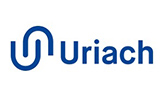CHAPTER 1: INTRODUCTION
1.1. Report description
1.2. Key benefits for stakeholders
1.3. Key market segments
1.4. Research methodology
1.4.1. Primary research
1.4.2. Secondary research
1.4.3. Analyst tools and models
CHAPTER 2: EXECUTIVE SUMMARY
2.1. Key findings
2.1.1. Top impacting factors
2.1.2. Top investment pockets
2.2. CXO perspective
CHAPTER 3: MARKET OVERVIEW
3.1. Market definition and scope
3.2. Porter's five forces analysis
3.2.1. Bargaining power of suppliers
3.2.2. Bargaining power of buyers
3.2.3. Threat of substitution
3.2.4. Threat of new entrants
3.2.5. Intensity of competitive rivalry
3.3. Supply chain analysis
3.4. Parent market overview
3.5. Smart ovens Market Pricing Analysis
3.6. Market dynamics
3.6.1. Drivers
3.6.1.1. Advancement in Smart ovens features to usher market expansion
3.6.1.1. Technological innovations in smart ovens
3.6.1.2. Increasing demand for ready to eat food
3.6.2. Restraints
3.6.2.1. Availability of cost-effective counterparts to dissuade market growth
3.6.3. Opportunities
3.6.3.1. Expanding into developing countries by creating product awareness
3.6.3.2. Voice control smart ovens to gain wide traction in the upcoming years
CHAPTER 4: GLOBAL SMART OVENS MARKET, BY TYPE
4.1. Overview
4.1.1. Market size and forecast, by type
4.2. Built In
4.2.1. Key market trends, growth factors, and opportunities
4.2.2. Market size and forecast, by region
4.2.3. Market analysis, by country
4.3. Counter Top
4.3.1. Key market trends, growth factors, and opportunities
4.3.2. Market size and forecast, by region
4.3.3. Market analysis, by country
CHAPTER 5: GLOBAL SMART OVENS MARKET, BY END USER
5.1. Overview
5.1.1. Market size and forecast, by end user
5.2. Residential
5.2.1. Key market trends, growth factors, and opportunities
5.2.2. Market size and forecast, by region
5.2.3. Market analysis, by country
5.3. Commercial
5.3.1. Key market trends, growth factors, and opportunities
5.3.2. Market size and forecast, by region
5.3.3. Market analysis, by country
CHAPTER 6: GLOBAL SMART OVENS MARKET, BY SALES CHANNEL
6.1. Overview
6.1.1. Market size and forecast, by sales Channel
6.2. Offline Channels
6.2.1. Key market trends, growth factors, and opportunities
6.2.2. Market size and forecast, by region
6.2.3. Market analysis, by country
6.3. Online Channels
6.3.1. Key market trends, growth factors, and opportunities
6.3.2. Market size and forecast, by region
6.3.3. Market analysis, by country
CHAPTER 7: SMART OVENS MARKET, BY REGION
7.1. Overview
7.1.1. Market size and forecast, by Region
7.2. North America
7.2.1. Key market trends, growth factors, and opportunities
7.2.2. Market size and forecast, by type
7.2.3. Market size and forecast, by end user
7.2.4. Market size and forecast, by sales Channel
7.2.5. Market analysis, by country
7.2.5.1. U.S.
7.2.5.1.1. Market size and forecast, by type
7.2.5.1.2. Market size and forecast, by end user
7.2.5.1.3. Market size and forecast, by sales Channel
7.2.5.2. CANADA
7.2.5.2.1. Market size and forecast, by type
7.2.5.2.2. Market size and forecast, by end user
7.2.5.2.3. Market size and forecast, by sales Channel
7.2.5.3. MEXICO
7.2.5.3.1. Market size and forecast, by type
7.2.5.3.2. Market size and forecast, by end user
7.2.5.3.3. Market size and forecast, by sales Channel
7.3. Europe
7.3.1. Key market trends, growth factors, and opportunities
7.3.2. Market size and forecast, by type
7.3.3. Market size and forecast, by end user
7.3.4. Market size and forecast, by sales channel
7.3.5. Market analysis, by country
7.3.5.1. UK
7.3.5.1.1. Market size and forecast, by type
7.3.5.1.2. Market size and forecast, by end user
7.3.5.1.3. Market size and forecast, by sales Channel
7.3.5.3. GERMANY
7.3.5.3.1. Market size and forecast, by type
7.3.5.3.2. Market size and forecast, by end user
7.3.5.3.3. Market size and forecast, by sales Channel
7.3.5.5. France
7.3.5.5.1. Market size and forecast, by type
7.3.5.5.2. Market size and forecast, by end user
7.3.5.5.3. Market size and forecast, by sales Channel
7.3.5.7. SPAIN
7.3.5.7.1. Market size and forecast, by type
7.3.5.7.2. Market size and forecast, by end user
7.3.5.7.3. Market size and forecast, by sales Channel
7.3.5.8. REST OF EUROPE
7.3.5.8.1. Market size and forecast, by type
7.3.5.8.2. Market size and forecast, by end user
7.3.5.8.3. Market size and forecast, by sales Channel
7.4. Asia-Pacific
7.4.1. Key market trends, growth factors, and opportunities
7.4.2. Market size and forecast, by type
7.4.3. Market size and forecast, by end user
7.4.4. Market size and forecast, by sales channel
7.4.5. Market analysis, by country
7.4.5.1. CHINA
7.4.5.1.1. Market size and forecast, by type
7.4.5.1.2. Market size and forecast, by end user
7.4.5.1.3. Market size and forecast, by sales Channel
7.4.5.3. INDIA
7.4.5.3.1. Market size and forecast, by type
7.4.5.3.2. Market size and forecast, by end user
7.4.5.3.3. Market size and forecast, by sales Channel
7.4.5.5. JAPAN
7.4.5.5.1. Market size and forecast, by type
7.4.5.5.2. Market size and forecast, by end user
7.4.5.5.3. Market size and forecast, by sales Channel
7.4.5.7. AUSTRALIA AND NEW ZEALAND
7.4.5.7.1. Market size and forecast, by type
7.4.5.7.2. Market size and forecast, by end user
7.4.5.7.3. Market size and forecast, by sales Channel
7.4.5.8. REST OF ASIA-PACIFIC
7.4.5.8.1. Market size and forecast, by type
7.4.5.8.2. Market size and forecast, by end user
7.4.5.8.3. Market size and forecast, by sales Channel
7.5. LAMEA
7.5.1. Key market trends, growth factors, and opportunities
7.5.2. Market size and forecast, by type
7.5.3. Market size and forecast, by end user
7.5.4. Market size and forecast, by sales Channel
7.5.5. Market analysis, by country
7.5.5.1. LATIN AMERICA
7.5.5.1.1. Market size and forecast, by type
7.5.5.1.2. Market size and forecast, by end user
7.5.5.1.3. Market size and forecast, by sales Channel
7.5.5.2. MIDDLE EAST
7.5.5.2.1. Market size and forecast, by type
7.5.5.2.2. Market size and forecast, by end user
7.5.5.2.3. Market size and forecast, by sales Channel
7.5.5.3. AFRICA
7.5.5.3.1. Market size and forecast, by type
7.5.5.3.2. Market size and forecast, by end user
7.5.5.3.3. Market size and forecast, by sales Channel
CHAPTER 8: COMPETITION LANDSCAPE
8.1. Competitive Dashboard
8.2. Product Mapping
8.3. Competitive Heatmap
8.4. Top winning strategies
8.5. Key developments
8.5.1. Business expansion
8.5.2. Product launch
8.5.3. Acquisition
8.5.4. Collaboration
8.5.5. Partnership
8.5.6. Merger
8.5.7. Joint Venture
CHAPTER 9: COMPANY PROFILES
9.1. June Life Inc.
9.1.1. Company overview
9.1.2. Key Executives
9.1.3. Company snapshot
9.1.4. Product portfolio
9.1.5. Key strategic moves and developments
9.2. LG Electronics
9.2.1. Company overview
9.2.2. Key Executive
9.2.3. Company snapshot
9.2.4. Operating business segments
9.2.5. Product portfolio
9.2.6. Business performance
9.2.7. Key strategic moves and developments
9.3. Panasonic Corporation
9.3.1. Company overview
9.3.2. Key Executives
9.3.3. Company snapshot
9.3.4. Operating business segments
9.3.5. Product portfolio
9.3.6. R&D Expenditure
9.3.7. Business performance
9.3.8. Key strategic moves and developments
9.4. SAMSUNG ELECTRONICS CO. LTD.
9.4.1. Company overview
9.4.2. Key Executives
9.4.3. Company snapshot
9.4.4. Operating business segments
9.4.5. Product portfolio
9.4.6. R&D Expenditure
9.4.7. Business performance
9.4.8. Key strategic moves and developments
9.5. QINGDAO HAIER CO., LTD.
9.5.1. Company overview
9.5.2. Key Executives
9.5.3. Company snapshot
9.5.4. Operating business segments
9.5.5. Product portfolio
9.5.6. Business performance
9.5.7. Key strategic moves and developments
9.6. HITACHI, LTD
9.6.1. Company overview
9.6.2. Key Executives
9.6.3. Company snapshot
9.6.4. Operating business segments
9.6.5. Product portfolio
9.6.6. Business performance
9.6.7. Key strategic moves and developments
9.7. WHIRLPOOL CORPORATION
9.7.1. Company overview
9.7.2. Company snapshot
9.7.3. Operating business segments
9.7.4. Product portfolio
9.7.5. R&D Expenditure
9.7.6. Business performance
9.7.7. Key strategic moves and developments
9.8. SHARP CORPORATION
9.8.1. Company overview
9.8.2. Key Executives
9.8.3. Operating business segments
9.8.4. Product portfolio
9.8.5. R&D Expenditure
9.8.6. Business performance
9.8.7. Key strategic moves and developments
9.9. AB Electrolux
9.9.1. Company overview
9.9.2. Key Executives
9.9.3. Company snapshot
9.9.4. Product portfolio
9.9.5. Operating business segments
9.9.6. R&D Expenditure
9.9.7. Business performance
9.9.8. Key strategic moves and developments
9.10. Tovala
9.10.1. Company overview
9.10.2. Key Executives
9.10.3. Company snapshot
9.10.4. Product portfolio
9.10.5. Key strategic moves and developments





